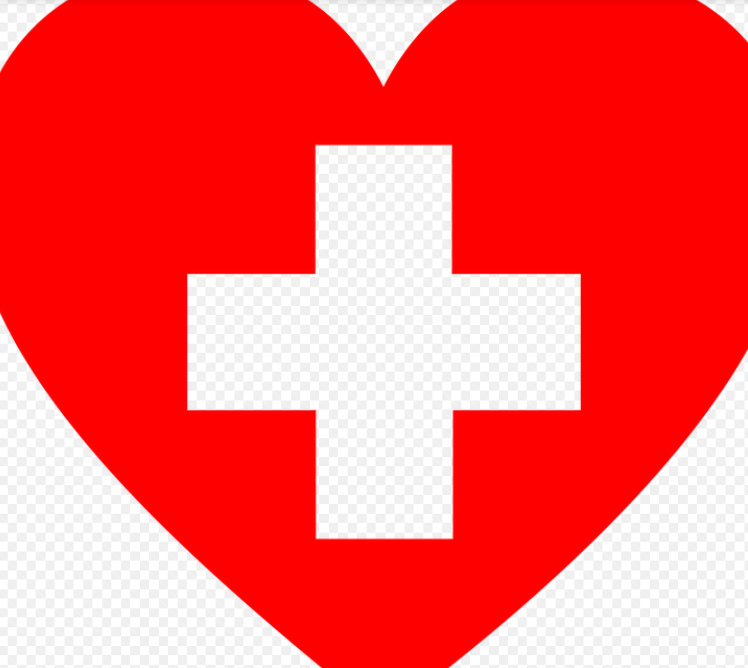Self Talk for Panic Attacks
Learn how to use self-talk to deal with panic attacks.

Selfpause Affirmation App
Download the app to get 1,000’s of affirmation meditations and everything you need to write, record and listen to your own.
There are several ways you can use self-talk for panic attacks, including focusing on a positive thought, distraction, and avoiding situations that may trigger an attack. Benzodiazepines are also an option. While these medications may have some side effects, they can be helpful for people who have severe anxiety or panic attacks.
Distraction

During an anxiety attack, distraction can be very useful in short-circuiting the attack. The mind is naturally anxious, and it wants to gather information or act in an impulsive way. By engaging in activities that create stronger sensory experiences, we can counteract the anxiety and panic responses. This is the basic idea behind distraction.
A good distraction technique is counting out loud or performing simple math calculations. Asking someone a question can also help focus. The person may feel embarrassed, but engaging in conversation can help them relax. Learning more about panic attacks can also help ease their symptoms and reduce their frequency. By learning more about this disorder, you can help yourself stop the panic attack before it starts.
Some panic attacks occur while you are asleep, so if you’re able to, try to get back to sleep. Then, when you feel the symptoms of panic attack onset, try to get up and move around. Sitting on your bed will only cause your mind to wander and cause frustration. You can also take a walk or splash water on your face. Another technique is to turn on the television or read a book. These will give you more time to think and process the situation.
Distractions are a great way to cope with anxiety. These strategies are most effective when combined with other treatment methods. Talk to your doctor about how to reduce your anxiety. Remember that everyone’s anxiety symptoms are different. Some people experience more severe symptoms than others, so it’s important to know what the early signs are so you can try distraction techniques.
Avoiding situations that might trigger a panic attack

If you are prone to panic attacks, avoiding situations that might trigger them can be an important first step. Although this is not always possible, it can reduce the frequency of panic attacks. A panic attack can start out of no apparent cause and can reach a height within a few minutes. If you can’t avoid a situation, you should try to reduce your exposure to stimuli by closing your eyes. Alternatively, you can try to distract yourself with an activity that doesn’t cause you stress.
A panic attack is an intense wave of fear that makes it hard to breathe and lead to a host of physical symptoms, including dizziness and sweating. The individual might even experience chest pain or a sense of detachment from reality. In most cases, panic attacks last anywhere from five minutes to half an hour. It’s important to know that it can happen to anyone, so avoiding situations that could trigger one is crucial.
The four main symptoms of a panic attack are intense fear, rapid heartbeat, and dizziness. Fortunately, most of these attacks last less than thirty minutes and are easily treated with the right treatment. In addition to avoiding situations that might trigger panic attacks, you can also practice deep breathing.
Positive self-talk

Positive self-talk can be an effective way to recover from an anxiety attack. It works by flooding the mind with good feelings. This is not limited to happy phrases, as you can use problem-solving techniques as well. The end goal is to train the brain to think positively instead of negatively.
It is important to avoid the occurrence of panic attacks as much as possible. Using positive self-talk is not a substitute for professional medical care. If you feel that the anxiety attacks are affecting your life, you should see a mental health professional. Nobody should have to live in fear of these attacks.
If you’ve ever had a panic attack, you know how frightening they can be. These episodes often come with no apparent reason. They’re a misfiring of your body’s fight-or-flight mechanism, which makes you feel like you are facing a threat.
Studies have shown that positive self-talk helps people cope with their emotions and manage mental stress. A recent study showed that athletes who used positive self-talk before giving a presentation were less likely to experience performance anxiety. Similarly, athletes who use positive self-talk to prepare for competition reported higher levels of motivation and higher technical performances. Positive self-talk also helps people stay engaged and enjoy their sport.
Affirmations can help a person overcome anxiety attacks. The goal is to change your brain’s response to fear. The words should be uplifting and positive. Repeating them to yourself or memorizing them will help to end a panic attack faster.
Benzodiazepines

Benzodiazepines are a class of medication that are used for the treatment of panic attacks. However, they should not be taken as the sole treatment for panic attacks. In some instances, they can cause sedation, which may lead to further side effects including postural hypotension, tachycardia, confusion, insomnia, depression, and loss of coordination. As with any drug, it’s best to consult your healthcare provider before taking benzodiazepines.
Benzodiazepines affect the gamma-aminobutyric acid (GABA) receptors in the brain. This causes a calming effect, which often relieves symptoms within minutes. They are also useful for treating insomnia, which can be a symptom of anxiety and make it harder to sleep. However, these medications can be dangerous if used improperly and can result in dangerous overdose.
Regular benzodiazepine therapy may also help decrease the intensity and duration of panic attacks. When used correctly, benzodiazepines can reduce the symptoms of panic attacks and improve the patient’s clinical picture. In certain cases, they can even help facilitate extubation.
The most common medications for panic disorder are selective serotonin reuptake inhibitors (SSRIs). These medications tend to have fewer side effects than tricyclic antidepressants. These drugs include fluoxetine (Prozac), fluvoxamine (Luvox), sertraline (Zoloft), and citalopram (Escitalopram).
CBT
CBT or cognitive behavioral therapy is an effective technique to treat panic attacks. It works by changing the way you think about things. When you think about a situation in a negative way, you increase the chances of having a panic attack. People with psychological problems often suffer from anxiety and panic attacks.
The key to CBT is facing the situation you’re afraid of and not denying it. In one study, a woman who suffers from panic attacks was instructed to repeat the phrase, “I’m going to die,” to herself 25 times a day. This helped her stop panicking.
The physical symptoms of a panic attack include shaking, dizziness, and shortness of breath. When combined with the cognitive symptoms, these attacks make a person feel like they’re about to collapse or suffer a heart attack. The attacks often last five minutes or less. However, they can cause an intense amount of worry and can cause the person to make poor choices.
During therapy, you may also be asked to identify what troubling situations or conditions are causing you anxiety. These may include medical conditions, divorces, grief, or symptoms of a mental health disorder. Then, you’ll be asked to observe how you talk to yourself about those situations. Sometimes you’ll even be asked to keep a journal to record your thoughts.
Behavioral therapy

Many people suffer from panic attacks at one time or another in their life. These episodes can be triggered by major stress or random events. Regardless of the cause, there are actionable steps you can take to make panic attacks more tolerable. You can learn to sit through them until they pass without triggering them again.
TIPP techniques can include diverting your attention from the panic sensations. Distraction techniques can include using the five senses, talking to a loved one, singing a song, or even playing with your dog. These distraction strategies can help you to overcome a panic attack and stop the cycle.
Another treatment for panic attacks is exposure therapy. In this therapy, you are exposed to a stressful situation for a period of time. Over time, you become less sensitive to the stressor and the anxiety triggered by it. Exposure therapy also helps reduce flashbacks. It is a step-by-step approach that gradually challenges your fear. Over time, you will become more confident and able to manage your anxiety.
Cognitive behavioral therapy is another treatment option for panic disorder. During therapy, you learn coping skills for panic attacks and learn to cope with the symptoms in a more healthy way. It also teaches you breathing techniques and problem-solving techniques.
Our Top FAQ's
Self talk is the internal dialogue that we have with ourselves. It can include both positive and negative thoughts, and can greatly impact our emotions and behaviors. Self talk can be used to manage panic attacks by helping to reframe negative or distorted thoughts and beliefs that contribute to panic. For example, if you are having a panic attack and telling yourself “I’m going to die,” you can use self talk to challenge that thought and say to yourself “I have had panic attacks before and I have always survived, so it is highly unlikely that I will die from this one.” This can help to reduce the intensity of the panic attack and give you a sense of control over the situation.
To identify negative self talk, it can be helpful to pay attention to your thoughts and the language you use when you are experiencing a panic attack. Some common forms of negative self talk include catastrophizing (exaggerating the negative consequences of a situation), personalization (believing that everything that goes wrong is your fault), and all-or-nothing thinking (believing that things are either good or bad, with no in-between). Once you have identified your negative self talk, you can challenge it by looking for evidence to support or refute it. For example, if you are telling yourself “I can’t do anything right,” you can try to come up with examples of times when you were successful or accomplished something.
Some examples of positive self talk that can be helpful during a panic attack include:
- “I can handle this panic attack and it will pass.”
- “I am safe and everything is going to be okay.”
- “I have coped with panic attacks before and I will do so again.”
- “I am in control of my thoughts and emotions, and I choose to focus on calming myself down.”
To incorporate self talk into your daily routine, you can try setting aside a few minutes each day to practice positive self talk. This can be as simple as silently repeating positive affirmations to yourself, or you can try writing them down and reading them back to yourself. You can also try incorporating self talk into your daily activities by reminding yourself of positive thoughts and beliefs as you go about your day. For example, if you are feeling anxious about a social event, you can remind yourself that “I am a likable and capable person and I have the skills to handle this situation.”
Self talk can be an effective tool for managing panic attacks, but it is often most effective when used in combination with other techniques such as relaxation techniques (such as deep breathing or progressive muscle relaxation) or seeking professional help. It can be especially helpful to work with a mental health professional to identify the underlying causes of your panic attacks and develop a plan to manage them.
